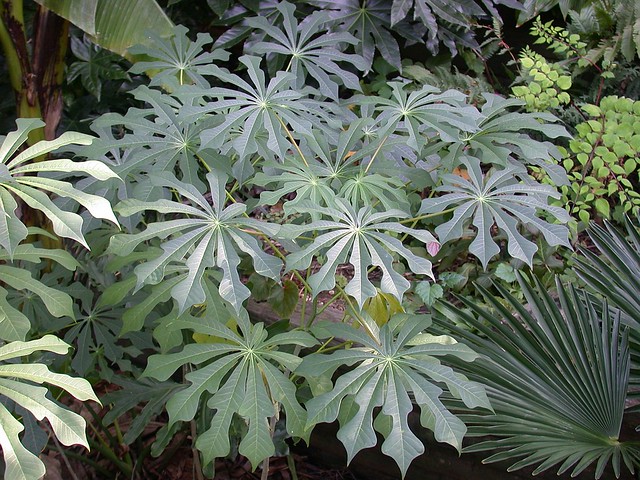
Manihot grahamii
For reasons unknown to me, my most popular photo on Flickr today was Manihot grahamii (Euphorbiaceae). This is an old photo, showing a group of seedlings that popped up in 2010 from a plant that had gone to seed in 2008, 2 years earlier. The seeds can clearly remain dormant for a long time before germinating because just yesterday I found another seedling coming up, although it has now been 6 years since this species went to seed in my garden.

Manihot grahamii seedling
This Brazilian native is rated as hardy to zone 7b by Plant Delights Nursery but has never overwintered in my own 7a/b garden, even through mild winters. Although self-seeding to the point of being invasive in zones 8 and 9, in my own garden this plant is ultimately self-limiting because plants growing from seed don't quite get big enough to bloom in a single growing season and don't survive the winter. Despite self-seeding prolifically, controlled germination from collected seeds is notoriously difficult; perhaps this is because the seeds take 2 or more years to germinate?
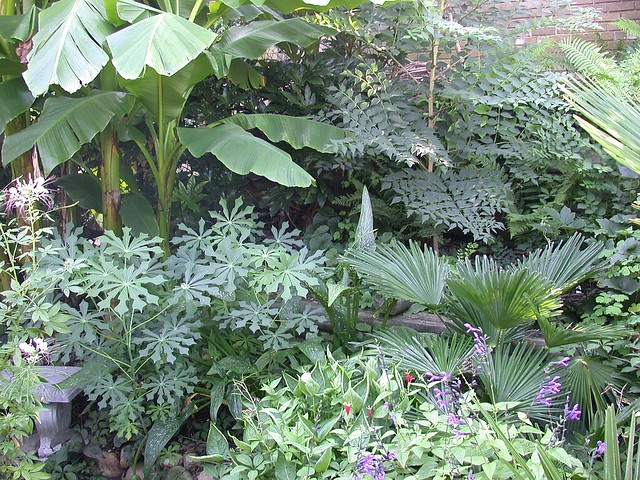
Manihot grahamii seedlings in the garden
The plant is heat and drought tolerant, and in warmer climates where it can survive the winter will grow into a small tree. As with other members of the Euphorbiaceae (spurge family), the plant produces separate male and female flowers on the same plant. The elegant, palmately compound leaves pair well with bolder foliage and produce a very nice silhouette against the sky.
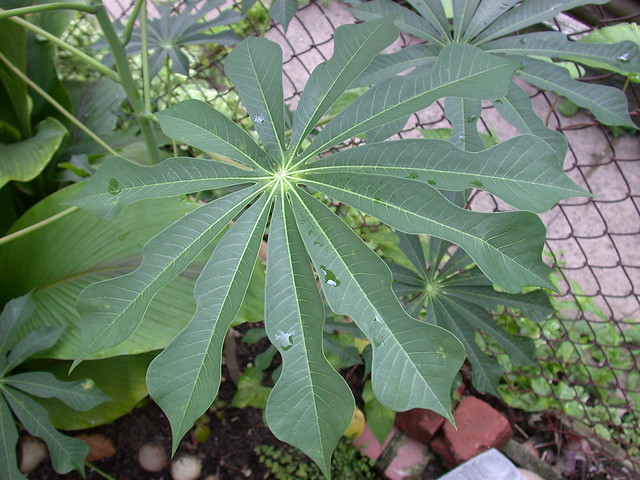
Manihot grahamii leaf
Foliage
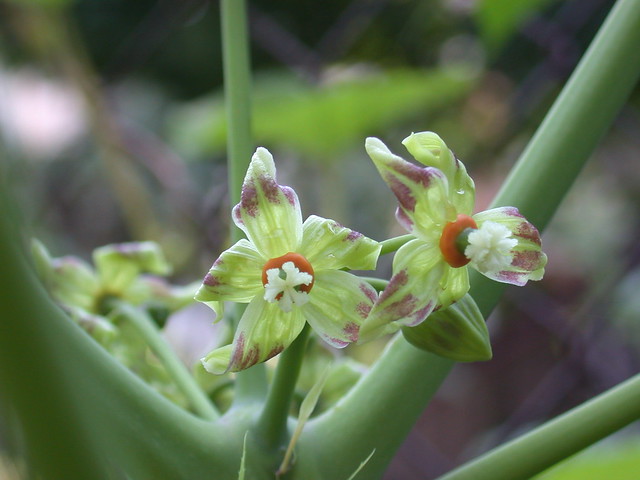
Pistillate (female) flowers

Staminate (male) flowers
Manihot grahamii is very closely related to Manihot esculenta, whose starchy roots are the source of manioc, cassava, yuca, and tapioca. Also related is castor bean (Ricinus communis) which similarly self-sows, the seeds easily surviving winter temperatures that will kill the plant. Castor bean is as bold as Manihot grahamii is elegant, and both are useful for producing the "tropical look" in gardens.
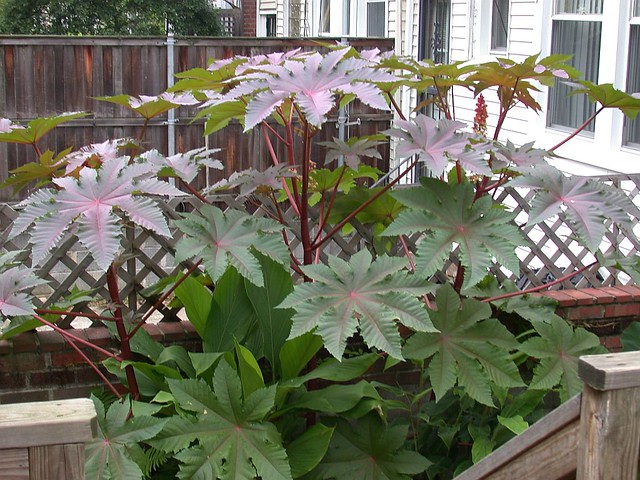
Ricinus communis 'Impala'

I don't suppose you could spare some seed could you?
ReplyDeleteSorry, no. The only seeds I have are in the ground and I have no way of finding them until they germinate! I forgot to mention that this species has explosive seed capsules that fling the seeds several feet in every direction. I've had a few come up every year since it went to seed in 2008.
DeleteIt was popular, because "Urban Gardens" listed it as a must-have plant. :-)
ReplyDeleteThanks, this post does seem to be getting a lot of traffic from Google.
DeleteI understand some parts of the plant Manihot grahamii are toxic. Would it then be deer resistant?
ReplyDeletePlease if you could help ID this one as on the webpage they say it is Manihot grahamii but each individual leaf is shaped different than your image and other google results: http://subirimagen.infojardin.com/subidas/images/bwy1294779648h.JPG Thank you :)
ReplyDeleteYes, that is a Manihot species and I'm fairly certain it's M. grahamii.
DeleteThank you :)<3 I shall try to find a seller and give it a go .
DeleteThis beauty has come up in my garden in South Africa. It it about 3m high now. I could get you some seeds as soon as they are ready.
ReplyDeletewow..would love to have some seeds as well
DeleteHi I'm Wayne Crowe from South Africa northern cape have 2 trees will let know when seeds are available
ReplyDeleteThanks for sharing. Always a pleasure to read.
ReplyDeleteanyone know when to pick the seed pods from the tree? I have a bunch and want to pick them at the right time...before they explode, Marcbyrne2020@gmail.com...thank you
ReplyDelete